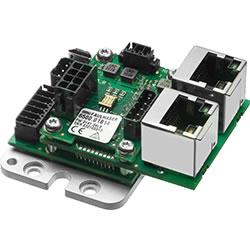Fiber laser vs CO₂ laser: Which one should you choose for your cutting needs?
In the field of metal processing, equipment decisions directly determine the competitiveness of enterprises in the next ten years. When faced with the technical route competition between fiber laser and CO₂ laser, the choice is not only about the equipment itself, but also involves core operating indicators such as energy consumption cost, material adaptability, and maintenance efficiency. As a technological pioneer in the field of industrial lasers, YiHai Laser will use data-driven power to break myths and reveal the true performance boundaries of the two technologies.
1. Technical roots: revolutionary differences in the way photons are generated
Working principle: high voltage current is used to excite the CO₂/N₂/He mixed gas to produce 10.6μm wavelength infrared light
Beam transmission: relies on a precision lens reflection system, with a transmission distance of ≥3 meters
Historical status: the main force in sheet metal processing in the past 40 years, with significant advantages in non-metallic cutting
Fiber laser (solid-state laser)
Working principle: diode-pumped ytterbium-doped fiber produces 1.07μm near-infrared light (YiHai uses IPG/Raycus light source)
Beam transmission: conducted through flexible optical fiber, zero mirror calibration required
Disruptive innovation: gradually replaced CO₂ as the standard for metal cutting after 2010
Key discovery: wavelength differences lead to huge changes in metal absorption rate - fiber laser absorption rate for steel (80%) is more than 5 times that of CO₂ laser (15%), laying the foundation for an energy efficiency revolution
YiHai's Technology Moat: Industrial-Grade Innovation Beyond Specs
Choosing YiHai means more than a laser source—it's a fully integrated smart production unit:
Photon Engine Optimization
BrightCore™ High-Brightness Source: Beam parameter product (BPP) <0.8mrad (industry avg: 2.5mrad), enabling 0.15mm ultra-narrow kerfs.
Dynamic Dual-Focus Technology: Auto-adjusts focus position; 20mm carbon steel taper <0.8°.
Smart Control Systems
AI-SmartCut 3.0: Real-time material surface analysis with automatic parameter compensation.
Digital Twin Simulation: Predicts processing conflicts and reduces trial-and-error losses.
Industry 4.0 Architecture
OPC UA Protocol Integration: Connects directly to MES systems; achieves 89% OEE (Overall Equipment Effectiveness).
Remote Diagnostics: Reduces maintenance response time by 4x.
Decision Tree: Three Steps to Lock Your Technology Path
Material Type Check
Non-metal processing? → Retain CO₂ Option
Metal ≥90%? → Firmly Choose Fiber Laser
Thickness Requirement
≤25mm metal? → Fiber Dominates
≥30mm thick plates? → Verify Edge Quality (YiHai offers sample testing)
Production Mode
High-volume standardization → Fiber Automation Integration
Multi-variety small batches → Fiber's Rapid Switching Advantage
Why Global Manufacturers Choose YiHai Fiber Systems?
Case 1: U.S. Aerospace Supplier AeroFlow
Challenge: Burrs on titanium alloy fuel pipe cuts caused seal failures.
Solution: YiHai 6kW fiber laser + argon shielding gas.
Result: Surface roughness Ra<1.6μm; scrap rate dropped from 11% to 0.4%.
Case 2: Chinese EV Battery Shell Manufacturer CATL
Challenge: Heat deformation exceeded tolerance on 0.5mm aluminum shells.
Solution: YiHai 3kW high-frequency pulse fiber cutting.
Result: Flatness ≤0.1mm; daily output soared to 12,000 units.
Action Guide: Unlock Your Technology Migration Plan
Claim Three: Immediate Tools:
Free Material Testing: Send your typical workpieces and receive YiHai's real-sample cutting results.
TCO Calculator: Input production data for a 5-year cost comparison report.
Production Line Audit: Expert team evaluates ROI for equipment upgrades.
Act Now—YiHai Laser Empowers Precision, Efficiency, and Future-Proof Manufacturing.
Web: yihailasers.com
Featured Product

